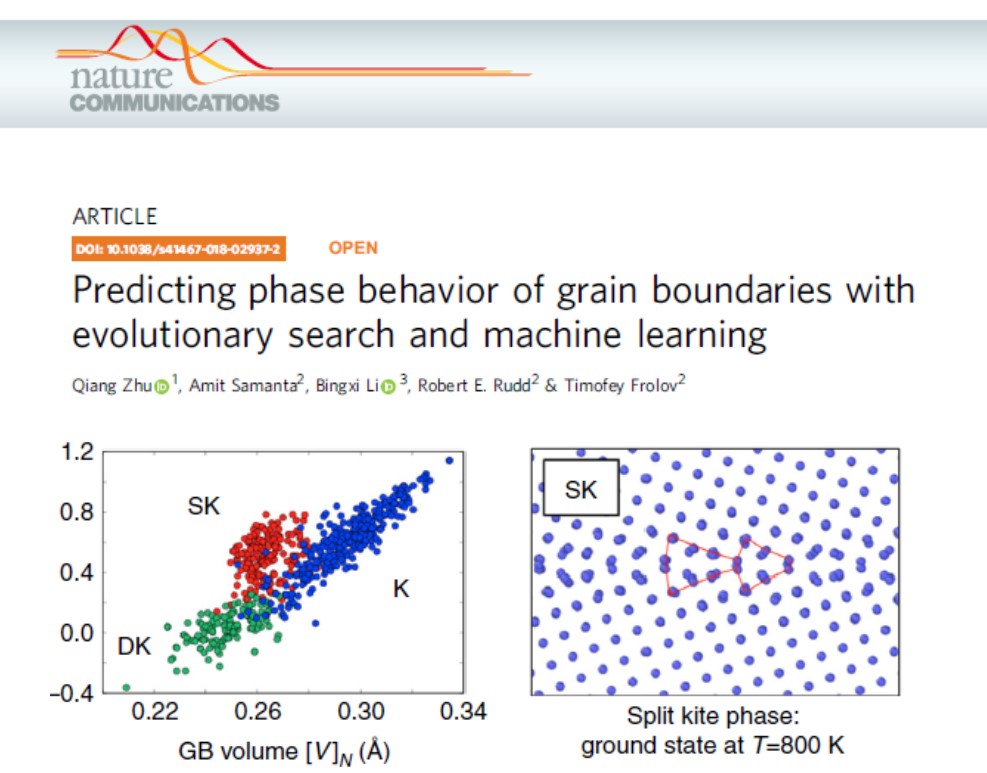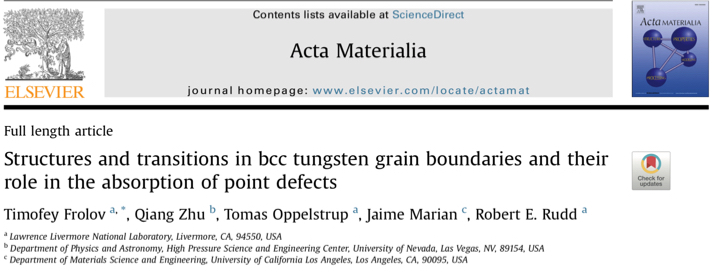 |
| |
CMS Group@UNLV |
|
|
|
Research 3: Materials Defects
|
|
The pursuit of new technologies for cleaner energy conversion requires
new generation of advanced metallic alloys and ceramics that can operate
safely at extreme environments (high temperature, high presure, strong radiation, . etc).
The properties of these structural and functional materials are strongly
influenced by the defects including surfaces, grain boundaries, and interfaces,
which depend on materials synthesis and processing.
Understanding their atomic structures and how they influence the physical properties
is the key to optimizing materials to meet the needs of advanced energy applications.
Recent years have seen a rapid growth of evidence suggesting that grain boundaries can exist
in multiple states or phases and exhibit first-order transitions, marked by discontinuous changes
in properties like segregation, mobility, cohesive strength and sliding resistance.
These discontinuous transitions were observed in isolated bicrystals with a single well-defined grain boundary
as well as in polycrystalline samples with many different grain boundaries.
|
|
Selected Applications
|
 |
|
|
 |
|
|
|
